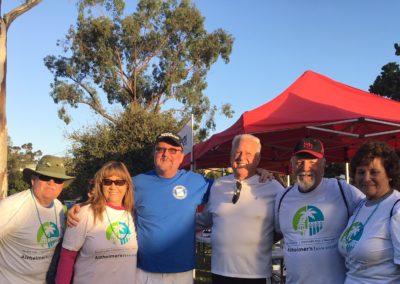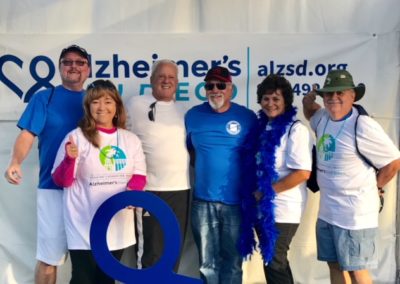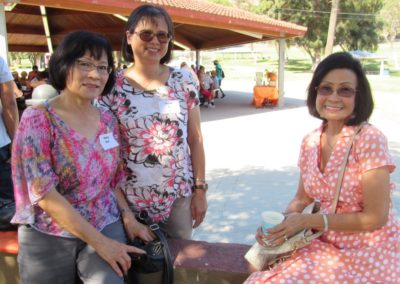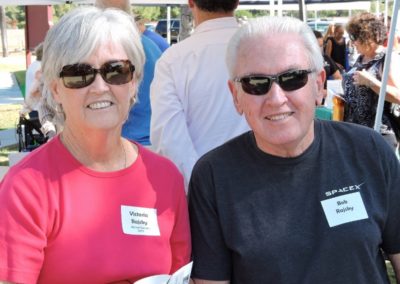December 2017
Honoring Yesterday – Protecting Tomorrow
Vol. 48, No. 12
What’s Inside
December Calendar of Events
Thurs., Dec 14, 11:00am
RESDC Holiday Luncheon
Bahia Hotel Resort, 998 W. Mission Bay Dr.
Thurs., Dec 14, 9:00am
SDCERA Board of Retirement Meeting
2275 Rio Bonito Way, Suite 200
Dec 25 – Jan 2
RESDC Office Closed for Holidays
The office reopens at 9:00am on Tuesday, Jan 2
![]() View the NETWORK
View the NETWORK
as a printable PDF
Are you on social media?
Stay connected with us!
![]()
![]()
![]()
Quote of the Month
Someone is sitting in the shade today because someone planted a tree a long time ago.
– Warren Buffet
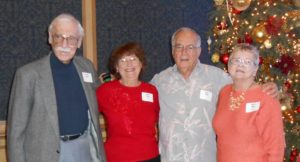 2017 Holiday Luncheon
2017 Holiday Luncheon
Click here for details and registration form for the annual RESDC Holiday Luncheon, Thursday, December 14, at the Bahia Resort Hotel, 998 West Mission Bay Drive.
President’s Message
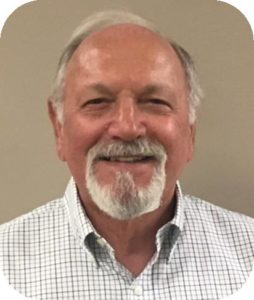
By John J. McTighe
In Memoriam
I am saddened and disappointed that RESDC can no longer publish the names of recently deceased former county employees. We’ve heard from many of you that the first place you looked in The NETWORK every month was the “In Memoriam” column to see if any of your former co-workers had recently passed away. I, too, regularly consulted that listing to see if I recognized any names on it. I hope you understand that it was not RESDC’s decision to do away with publishing those names. As we explained in the October NETWORK, our source for that information was the San Diego County Employees Retirement Association (SDCERA), which has ceased making that information available to RESDC for publication. Since we have received many questions about this after announcing it in October, I thought it might be helpful to give you a more complete explanation for SDCERA’s decision.
On advice of Deputy District Attorney Paul Greenwood, Head of Elder Abuse Prosecutions (and a RESDC Associate Member), SDCERA’s legal counsel determined that the publication of that information potentially exposed relatives of recently deceased employees to scams and fraud. In Mr. Greenwood’s words, “I am of the view that such listings should be discontinued. Any time we can reduce the risk of an elder becoming a victim, then I believe we are performing a valuable service to the County residents.” Out of an abundance of caution, SDCERA made the decision to no longer make that information available for publication. They have even removed the listing of deceased members from the monthly agenda materials of the Board of Retirement where it had historically appeared. We respect our members’ privacy and in fact zealously guard against ever disclosing our members names and contact information to other organizations and the public. Likewise, we respect SDCERA’s decision and don’t want to play into the hands of people who might dishonestly use this information to take advantage of the survivors of deceased members.
Each One, Reach One
On a more positive note, I want to thank those of you who have reached out to your fellow retirees to become members of RESDC. We have seen an increase in the number of members over where we were last year, and a lot of that is a result of you putting the word out about RESDC. For those of you who have recently joined or who haven’t yet had the opportunity, I encourage you to tell your former colleagues about RESDC and the benefits of membership. As you’ve heard before, there’s strength in numbers, and by increasing our membership numbers we can not only be a more potent force in advocating on behalf of retirees, but we can have larger buying power when it comes to membership benefits that could result in future decreases in the cost of those member benefits.
CRCEA Conference
The semi-annual conference of the California Retired County Employees Association (CRCEA) was held in October in Emeryville, which is at the east end of the San Francisco Bay Bridge. CRCEA is made up of the local county associations like RESDC in the 20 counties whose retirement systems fall under the County Employees Retirement Law of 1937. Three of RESDC’s Board Members (George Shoemaker, Merrill Roach, and I) along with our Executive Director, Mark Nanzer, attended to represent your association. In addition, our RESDC Secretary, Carlos Gonzalez, was there as the Treasurer of CRCEA. San Diego County is well represented in this organization with SDCERA Board Member Skip Murphy serving as President.
The conference was a good mix of topics of interest to retirees and to retirement associations. This year, I paid close attention to how the conference was organized and run, since RESDC will be hosting this statewide conference in April 2019. As with anything we do, we want to make the conference experience in San Diego the best it can be so that our colleagues throughout California will take back good memories of their time spent here. Early next year we will be asking for volunteers to assist us in the conference planning and to become part of the conference host committee. So, if you’ve ever had any experience hosting conferences, or just want to be part of the action, please be thinking about volunteering when we put out the invitation. We will publish a formal notice in The NETWORK with details on how to volunteer in the Spring of next year.
Holiday Luncheon
It’s not too late to sign up for the December 14th Holiday Luncheon at the Bahia Hotel. If you’ve never been to one of these lunches, I’d love to have you start a new tradition this year. It’s a great opportunity to dress up, see some old friends, have a spectacular view overlooking Mission Bay, eat some tasty holiday food, hear holiday entertainment, get an update on RESDC’s activities, meet your RESDC Board Members, and possibly even win a prize in the opportunity drawing. See page 8 for details and registration form. I look forward to seeing you there. ◾
Public Retirement Deficits:
Really a Crisis?
By Stan Coombs
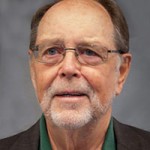 We’ve talked about the subject before. On the surface, defined benefit retirement funding isn’t that complicated. Estimates of funding needed are calculated each year, estimates of revenue expected from retirement fund investments are estimated (assumption rates), and contribution rates for the employer (normal contributions) and employees (payroll deductions) are selected to produce the rest of the needed money. Employer and employee contributions serve as balancing revenues needed to hit a potentially moving target.
We’ve talked about the subject before. On the surface, defined benefit retirement funding isn’t that complicated. Estimates of funding needed are calculated each year, estimates of revenue expected from retirement fund investments are estimated (assumption rates), and contribution rates for the employer (normal contributions) and employees (payroll deductions) are selected to produce the rest of the needed money. Employer and employee contributions serve as balancing revenues needed to hit a potentially moving target.
As long as the expected investment earnings materialize, all’s well. To the extent they don’t, a new deficit is created, and amortized (paid off) over 20 years, or so, by the sponsoring employer.
Funding deficits can be created other ways, by decisions to reduce assumption rates during scheduled market reevaluations, for example. And, since low-earning years typically occur several times a decade, and assumption rates are reevaluated and changed as markets cycle up and down, there are frequently medium-term deficits.
The variations over long periods in these temporary public retirement system deficits are well illustrated by a listing of “Funded Ratios” from past SDCERA reports. SDCERA’s reported funded level was 106.8% in 2001, dropped to 82.5% in 2002, and then ranged through 75.5%, 81.1%, 80.3%, 83.6%, 89.7%, 94.4%, 91.5%, 84.3%, 81.5%, 78.7%, 79.0%, 80.9%, 80.5%, to 76.9% in 2016. That 15-year period included all three causal events mentioned, plus the impactful “Great Recession” of 2008-09. SDCERA’s unfunded actuarial accrued liability, or deficit, was reported to total $3.32 billion in 2016.
But this periodic deficit funding isn’t considered routine by all comers. Readers may recall two opinion pieces recently published in the San Diego Union-Tribune, “Why Full Funding of Pensions is a Waste of Money,” on September 15th, and “Why Unfunded Public Pension Plans Amount to Theft,” on September 21st. The first questioned the importance of full funding of public retirement systems, and the second disagreed. Agree or disagree with the opinions advanced, both were thoughtful pieces.
But, it’s common for the media to characterize all such deficits as scandalous. The internet is full of articles with such titles as, “State and Local Pension Funding Deficits: A Primer,” “The State Pension Funding Gap,” “Issue Brief – State and Local Pension Plan Funding Sputters in FY 2016,” and “Hidden Debt, Hidden Deficits.”
The last of these four, a detailed piece from the Hoover Institute, estimated total U.S. public retirement deficits to be, not a previously reported $1.38 trillion, which had assumed 7.5% in future average earnings on retirement funds, but $3.85 trillion, based on a more conservative, 2.8% predicted earnings and non-vested health benefit costs. For perspective, a 2013 Federal Reserve Z.1 Report totaled U.S. assets at about $225 trillion.
But, what’s the total U.S. public retirement deficit picture? Depends on which applicable analysis and report strikes your fancy.
The Milliman Public Pension Funding Index is arguably one of the better sources. Begun in 2001 by this 70-year old, international actuarial consulting firm, the index tracks the 100 largest U.S. public pension plans, including states, municipalities, schools and university systems, and our own SDCERA. They use straightforward descriptions and explanations, clear language and a lack of jargon. And, it’s updated quarterly.
The last published Milliman Index, addressing the second quarter of 2017, reported that the funded ratio of the 100 plans rose to 73.0% from a previous 72.0%, as the result of strong equity returns, and that the overall deficit had dropped from $1.314 trillion to $1.281 trillion. They said the 100 plans experienced investment returns of 3.06% for the quarter, generating investment income of approximately $100 billion, offset by approximately $27 billion of negative cash flow, in benefits paid out.
Earnings for the 100 plans during the first three-quarters of that fiscal year totaled 3.49%, .45% and 4.29% respectively, more than 11.3% for the 12 months, against a median assumption rate of 7.5%. Nineteen of the plans were reported to have funded ratios higher than 90%, 60 plans had funded ratios between 60% and 90%, 21 plans had funded ratios lower than 60%, and nine plans remained under 40% funded, they said.
Interestingly, in a section of the report dealing with asset allocations (investment categories), Milliman pointed out that during the four-year period between 2012 and 2016 – including problematic investment periods – there was very little change in the investment stance of the plans, which “belies claims that public pensions are universally chasing higher returns by shifting into riskier investments.”
Also interesting, the National Association of State Retirement Administrators notes that total spending on U.S. state and local government retirement was 4.5% of their direct general spending in 2014. And, for the 30-year period between 1987 and 2016, investment earnings paid 60% of public pension revenues, while pension benefits created 7.1 million jobs and $1.2 trillion in economic output. ◾
Pension Facts
The Public Pension Tug-of-War: Part 2
Public Pension Naysayers – Pulling Hard to Rein in Benefits
Pension Facts at a Glance
74%
74 cents of every CalPERS public employee pension dollar comes from investment earnings and worker contributions (based upon 20 years of data through June 30, 2017)
By Chris Heiserman, Director
 Retirement plans public workers pay into their whole careers are under assault. Public pensions are berated for allegedly being too expensive and threatening to squeeze taxpayer-funded budgets and reduce revenues for basic services. The forces against traditional pensions that actually provide retired workers a reasonably secure retirement are gaining momentum and coalescing strategically around an alarmist narrative of misleading claims about the fiscal viability of public pension plans.
Retirement plans public workers pay into their whole careers are under assault. Public pensions are berated for allegedly being too expensive and threatening to squeeze taxpayer-funded budgets and reduce revenues for basic services. The forces against traditional pensions that actually provide retired workers a reasonably secure retirement are gaining momentum and coalescing strategically around an alarmist narrative of misleading claims about the fiscal viability of public pension plans.
This cabal of public sector pension detractors asserts the following strident points in media headlines and articles, conservative think tank reports and seminars wherever anyone will listen:
- There is an imminent fiscal “crisis” in the unfunded liability status of most public pension systems and paying for retiree benefits will “crowd out” current needs;
- Public retiree benefits are too lucrative, citing the numbers of former government workers receiving six-figure annual pensions; and,
- The solutions are to curb benefits, close defined benefit pensions and put all public workers in 401(k) savings accounts.
No one is arguing that California elected leaders, taxpayers and public employees do not face serious fiscal challenges in catching up on their shares of unfunded liabilities in retirement funds and funding promised future benefits when workers retire. However, characterizing the situation as a “crisis” today is misleading considering the long term financial planning horizon for pension systems and the fact that deliberate steps to tackle the problem are being taken by the state and local governments.
The California Legislature passed meaningful pension reforms five years ago requiring employees to share more in the cost of their pensions; and new hires after January 1, 2013 will receive reduced benefits and have to wait longer to retire. In addition, many public agency elected officials and union leaders are fashioning new labor agreements that adjust retirement benefit costs to protect the long term fiscal health of both pension funds and service delivery budgets.
In a recent offering from reason.com, a website affiliated with a Libertarian magazine, the headline read: “California’s Six-Figure Pension Club Has 62,000 Members.” The item referred to the thousands of state retirees receiving more than $100,000 annually and including clip art of a golden egg. Of course, there was no mention in the article that this group represents only three percent of the hundreds of thousands of former California workers getting benefits, or that the average annual pension is $33,528.
On the third point, I can only repeat what I said last month. Public pension opponents never argue that 401(k)s are going to produce retirement security; only that public sector workers should be saddled with the same unsatisfactory retirement savings option that most private sector employees are stuck with.
So who are these mean-spirited public pension critics who suggest that traditional retirement benefits are a metaphorical Golden Goose that should be slaughtered in the general public interest? A key pocket of the public pension resistance movement is affiliated with Stanford University, particularly a group of professors and policy analysts with the Stanford Institute for Economic Policy Research (SIEPR) often described in media articles as “experts.” In September SIEPR staged a day-long “invitation only” media workshop, “Understanding the Public Employee Pension Debate.” That event included numerous PowerPoint presentations on how public pension plans are governed and funded; however, the central message was the notion that the cost of public retirement benefits throughout California is “crowding out” spending on today’s services.
Apparently SIEPR has successfully marketed the “crowd out” theme to a wide variety of media sources. Some newspapers and online news outlets have come out with recent articles sporting the following headlines:
“State pension costs are crowding out basic services.” (Orange County Register)
“How pension costs reduce government services.” (Calpensions.com)
“In California, rising pension tide leaves services underwater.” (Bond Buyer)
“What is being squeezed out to pay increasing pension costs?” (Press Democrat)
All of these “news” items are based either on the SIEPR workshop or an October report from SIEPR Professor Joe Nation, “Pension Math: Public Pension Spending and Service Crowd Out in California, 2003-2030.” Not surprisingly, all SIEPR conclusions support the institute’s original bias that today’s public pensions are financially unsustainable. In his 193-page report, Nation presents 14 case studies of a range of jurisdictions (state, sample cities and counties, special districts and school districts), analyzing pension contributions and the funded status of their plans.
A more detailed review of the report, its actuarial assumptions and findings will be saved for a future column. Interestingly, one of the “observations” made from the case studies highlighted a pension fund measurement of “unfunded liability per jurisdiction household.” This measure, which conveniently portrays another seemingly ominous financial burden on taxpayers, is made available on SIEPR’s California Pension Tracker website. The website includes financial status data for California Public Employees’ Retirement System (CalPERS) member agencies and most counties, cities, and special districts that offer defined benefit pensions.
In case you wondered, SIEPR is far from alone in attacking public pensions. How about a few more anti-public pension websites:
- Pension Tsunami (http://www.pensiontsunami.com/) – “…to provide an overview of the multiple pension crises that are about to drown America’s taxpayers.”
- Transparent California (https://transparentcalifornia.com/) Statewide public pay and pension database, interestingly provided by the Nevada Policy Research Institute, self described as a “non-partisan, non-profit think tank that promotes policy ideas consistent with the principles of limited government, individual liberty and free markets.”
- California Policy Center (http://californiapolicycenter.org/) Based in Irvine, the most recent posting under the issue of “Pensions” is “Coping with the Pension Albatross,” highlighting the SIEPR study referenced above and other recent reports critical of public pensions.
There are also individual authors who regularly castigate public pensions in various print and online media. For example, Steven Greenhut, who spent much of his career on the editorial board of The Orange County Register, still writes a politics column there and contributes to the California Policy Institute. He is now affiliated with the R Street Institute, a conservative think-tank promoting free markets and limited government. In 2009 he published his second book, “Plunder! How Public Employee Unions are Raiding Treasuries, Controlling Our Lives and Bankrupting the Nation.” ◾
Recent Events
- New Scam Targets CalPERS Retirees:
RESDC members be aware! While this story is related to CalPERS members, the scammers out there may try to copycat this scam. CalPERS is warning its members to look out for a scam that tells them they owe money to the pension fund. A caller reportedly is telling retirees that they have to send money through prepaid credit cards in order to receive their pensions. The call may appear to be legitimate at first, CalPERS said. On phones with caller ID, the call appears to come from the pension fund. The scammer then identifies himself as representing the California Retirement Department and asks that retirees send him money. “Please be advised that CalPERS will never cold call you to ask that you pay funds over the phone and will never ask you to pay funds via prepaid credit or reloadable cards,” CalPERS said in its warning. ◾
Changes to Bylaws
By Mark Nanzer, Executive Director
At the October 12, 2017 RESDC Board of Directors meeting, Board members reviewed and approved the following revisions to the Bylaws. The revisions will be presented to RESDC membership at the annual meeting in December for ratification and inclusion into the bylaws:
BYLAWS REVISIONS
ARTICLE III – MEMBERSHIP
Section 1
Any person who is receiving a retirement allowance by reason of membership in the San Diego County Employees Retirement Association, or the surviving spouse of such person who is receiving a survivor’s allowance, shall be eligible for retired employee membership in RESDC.
Section 2
Spouses of retired employee members are eligible for Associate membership upon application.
Section 3
Persons who are working or who have worked for the County of San Diego and/or are a member of the San Diego County Employees Retirement Association, but who are not otherwise eligible for membership, are eligible for Associate membership upon application.
Section 4
Associate members are not eligible to vote or hold office in RESDC, but may participate in all other activities, except scholarship sponsorship. ◾
Team RESDC at Walk4ALZ on October 21, 2017 &
RESDC Health Fair Picnic at Admiral Baker Field on October 17, 2017
For more photos, visit the Walk4ALZ 2017 Gallery and the Health Fair Picnic 2017 Gallery.
San Diego County Credit Union

Are you taking advantage of SDCCU’s FREE Checking with eStatements? Access over 30,000 surcharge‐FREE CO‐OP ATMs nationwide. Visit sdccu.com/partner to see how you can get up to $100 for a limited time! Open an account in minutes and free yourself of monthly activity fees. When you direct deposit your pension into your SDCCU® checking account, you may enjoy it earlier than your regularly scheduled payday. Sign up for direct deposit at sdccu.com/directdeposit today to start enjoying your paycheck early! Restrictions apply. Actual deposit date not guaranteed. Federally insured by NCUA.
It’s that time of year again. SDCCU Happy Debitdays is back, and we’ll be giving our members an opportunity to win some serious cash! Every debit card purchase is an automatic entry! Now through December 26, weekly winners will win double their SDCCU debit card purchase, up to $1,000. The more members shop, the more chances they have to win! One lucky winner will be announced each week. No purchase necessary. Official rules can be found at sdccu.com/sweepstakes. ◾
 See’s Candy Certificates
See’s Candy Certificates
Great Holiday Gifts!
Purchase from RESDC for Less!
See’s Candy is now priced at $19.90 per pound if you buy it at one of their stores. RESDC members can purchase See’s gift certificates from us at $16.90 each.
If you would like to order certificates from our office, please address an envelope to RESDC, 8825 Aero Dr., Suite 205, San Diego, CA 92123. Enclose a check for $16.90 for each certificate.
Also enclose a business size (#10) self-addressed stamped envelope, as the certificates will not fit in a small envelope. If you order over five certificates, please put 70¢ postage on the self-addressed enclosed envelope. Please include a stamped envelope for every 10 certificates. Candy certificates are redeemable at any of the See’s retail stores for ready-packed or specially packed boxes.
These certificates do not have an expiration date. See’s Candy Certificates are available through RESDC all year long. ◾
Theo and Evelyn Yakel Scholarships 2018
By Carlos Gonzalez, RESDC Scholarship Committee Chair
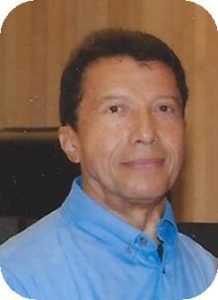
 All children, grandchildren or great-grandchildren of a RESDC member may be eligible to apply for the Yakel Scholarships. The Theo and Evelyn Yakel Scholarships are available again this year from the Yakel Scholarship Fund through the San Diego Foundation. To be eligible, the applicant must be a high school senior, an American citizen, and must plan to attend a two-year or four-year college in the United States. The scholarship must be used for tuition, books, or fees.
All children, grandchildren or great-grandchildren of a RESDC member may be eligible to apply for the Yakel Scholarships. The Theo and Evelyn Yakel Scholarships are available again this year from the Yakel Scholarship Fund through the San Diego Foundation. To be eligible, the applicant must be a high school senior, an American citizen, and must plan to attend a two-year or four-year college in the United States. The scholarship must be used for tuition, books, or fees.
The two-month application period opens December 1, 2017 and closes February 1, 2018, at 2:00 p.m. Applicants should go to www.sdfoundation.org and fill out the Common Scholarship Application to be considered for the Theo Yakel Scholarship as well as other scholarships they might qualify for. For further information, please call the San Diego Foundation at (619) 814-1343.
A document verifying that the sponsor (parent, grandparent, or great-grandparent) is a RESDC member must be attached to each application filed. This document can be obtained by calling the RESDC office at (866) 688-9229 or sending an e-mail request to resdc@resdc.net. The foundation requires this document be verified and signed by a RESDC staff member and will not accept an application without this document.
PLEASE NOTE: All eligible high school seniors ARE ALLOWED to apply for both the Yakel and the RESDC Scholarships. Details concerning the RESDC Scholarship Program will be in the January issue of The NETWORK. ◾
2018 Budget Summary
The budget proposal below will be voted on by the General Membership at our Annual Meeting (Holiday Luncheon) on December 14, 2017.
| REVENUE | |
| Candy Sales | 11,000 |
| Dividends | 11,500 |
| Dues | 385,464 |
| General Membership Meetings | 11,200 |
| Scholarship Donations | 750 |
| TOTAL REVENUE | $419,914 |
| DISBURSEMENTS | |
| Personnel Related | |
| Salaries & Related Expenses | 187,111 |
| Professional Services | 14,340 |
| Non-Personnel Related | |
| Restricted Benefit Protection Fund | 38,504 |
| Board Election | 2,500 |
| Business Expenses | 350 |
| Candy Purchases | 9,000 |
| Conferences/Meetings | 13,000 |
| Dues & Subscriptions | 3,850 |
| General Membership Meetings | 24,589 |
| Insurance | 4,550 |
| Office Supplies | 3,800 |
| Postage & Shipping | 2,500 |
| Printing & Copying | 51,472 |
| Professional Development | 500 |
| Recruitment | 9,818 |
| Scholarships | 10,750 |
| Telecommunications | 4,480 |
| Utilities | 1,000 |
| Facility & Equipment | |
| Equipment Purchase & Service | 700 |
| Furniture | 300 |
| Rent | 32,900 |
| Computer | 3,900 |
| TOTAL DISBURSEMENTS | $419,914 |
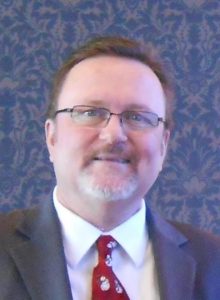 RESDC Restricted Benefit Protection Fund Policy Revision
RESDC Restricted Benefit Protection Fund Policy Revision
By Mark Nanzer, Executive Director
At the October 12, 2017 RESDC Board of Directors meeting, the Board approved a recommendation to request that membership approve an expansion to the approved uses of the Restricted Benefit Protection Fund (RBPF).
The RBPF was established and approved by RESDC membership in 2004 for the protection of retiree healthcare benefits. While protection of healthcare benefits is critical, the RESDC Board feels the eligible uses of the RBPF should be broadened to include protection of all earned pension benefits. The following language will be presented to membership at the annual meeting on December 14th for approval and inclusion into the RESDC Policy Manual:
That the Restricted Benefit Protection Fund shall be held in restricted accounts to be used only for extraordinary costs incurred for the protection of retirement benefits of San Diego County retirees. Such benefit protection costs may include those for research, advocacy, professional and legal consultation or representation, and member and public information services.
The Restricted Benefit Protection Fund shall be maintained by an allocation to it of 10% of each member’s monthly dues upon payment. A specific vote of approval by the RESDC Board of Directors and recordation of the approval in the minutes is required for all expenditures from the Restricted Benefit Protection Fund.
The RESDC Board of Directors shall periodically review the balance in the fund and determine whether a change in the amount of the paid monthly dues being allocated to it should be accomplished. ◾
 Annual RESDC Holiday Luncheon
Annual RESDC Holiday Luncheon
When
Thursday, December 14, 2017, 11:00am – 2:00pm
Lunch is served at 11:30am
Where
Bahia Resort Hotel
998 W Mission Bay Dr, San Diego, CA 92109
Menu
Roast Turkey or Vegetarian Lunch
Cost
$22 per person
Program
President’s Welcome, introduction of guests, approval of the 2018 budget, and music performed by California Note Catchers.
Directions
From I-5 South, take Sea World Drive to West Mission Bay Drive. From I-5 North and I-8 West, take “Beaches” to Sports Arena/West Mission Bay Drive. Bahia is on North side of West Mission Bay Drive.
Registration
Registration forms and payment must be received in the RESDC office by Thursday, December 7. There are no refunds for cancellations after December 7.
Reserved tables will be provided only for groups of ten who pay for the entire group with one check or one credit card. No exceptions.
If handicapped seating is required, please call our office at (619) 688-9229, or you may inform us on your registration form.
Please come to the check-in table when you arrive to pick up your packet with name badge(s), meal ticket(s), and opportunity drawing ticket(s). They will not be mailed.
Register by Mail:
- Print and fill out the registration form.
- Make a check payable to RESDC for $22 per person.
- Mail registration form, along with check, to RESDC, 8825 Aero Dr., Suite 205, San Diego, CA 92123
Register Online:
- Click here to register online.
- Use the email associated with your member account. Click “Add guest” to add additional registrants for $22 each. To pay for yourself and guests, click “Pay Online” and pay with credit card. You may call the RESDC Office at (619) 688-9229 for help with online registration, during our office hours of 9 am – 2 pm Mon-Fri.
Register by Phone:
- Call the RESDC Office at (619) 688-9229 during our hours of 9 am – 2 pm Mon-Fri.
For questions or assistance registering, contact us at (619) 688-9229 or resdc@resdc.net.
Welcome New Members
Joseph Amorelli
Sara Azua* – Sheriff
Robert Banuelos – Probation
Charito Dalton – Health & Human Services
Daniel Elkerton – Sheriff
Cindy Kendrick
Virginia E. Lopez
Jane C. Mann – Superior Court
Lisa Olimpio* – Health & Human Services
Barbara Sliwinski* – Planning & Development
Brenda Snyder* – Sheriff
Pete Tisnado
Marylyn Vandermoer – Mental Health
Wanda Younger-Brockman – Health & Human Services
*Associate Member
The surviving spouse of a member is eligible for RESDC membership. For enrollment assistance, call (866) 688-9229.
NETWORK is the official monthly newsletter of the Retired Employees of San Diego County, Inc. (RESDC), a private non-profit organization.
The information printed in the NETWORK is believed to be from reliable sources. However, no responsibility is assumed by the NETWORK for inaccuracies contained herein.
Business and Inquiries: Business matters and address changes may be recorded on our voicemail at any time, call (866) 688-9229. Please spell your name so the correct member record can be located.
Retired Employees of San Diego County, Inc.
8825 Aero Drive, Suite 205 | San Diego, CA 92123
Office Hours: 9 a.m. to 2 p.m. Monday through Friday
TELEPHONE: (866) 688-9229 Toll Free
FAX: (619) 688-0766
E-MAIL: resdc@resdc.net


